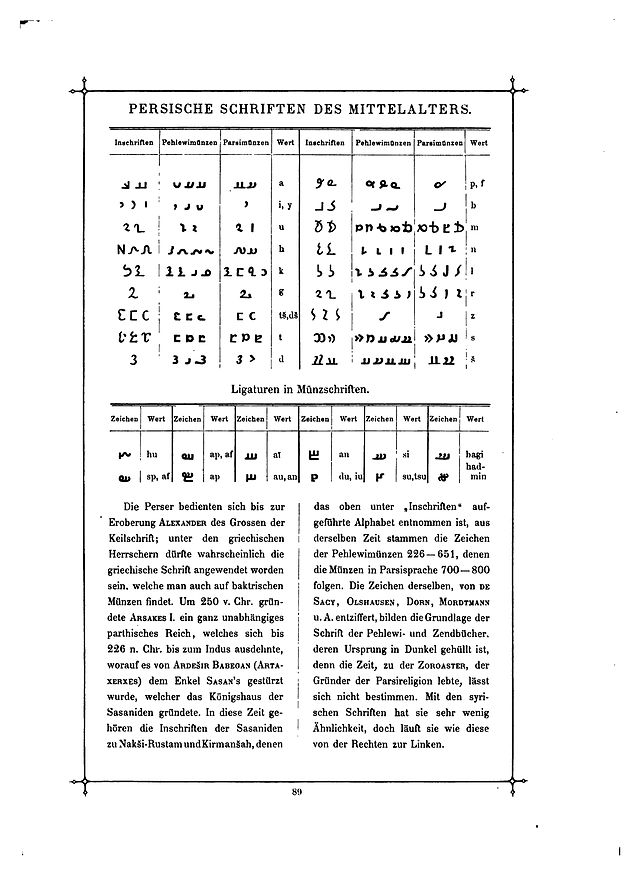Top Qs
Timeline
Chat
Perspective
Inscriptional Pahlavi
Earliest attested form of Pahlavi scripts From Wikipedia, the free encyclopedia
Remove ads
Inscriptional Pahlavi is the earliest attested form of Pahlavi scripts, and is evident in clay fragments that have been dated to the reign of Mithridates I (r. 171–138 BC). Other early evidence includes the Pahlavi inscriptions of Parthian coins and the rock inscriptions of Sasanian emperors and other notables, such as Kartir the High Priest.

Remove ads
Letters
Inscriptional Pahlavi used 19 non-joining letters:[1][2]
Remove ads
Numbers
Inscriptional Pahlavi had its own numerals:
Numbers are written right-to-left. Numbers without corresponding numerals are additive. For example, 24 is written as 𐭽𐭻 (20 + 4).[1]
Unicode
Inscriptional Pahlavi script was added to the Unicode Standard in October, 2009 with the release of version 5.2.
The Unicode block for Inscriptional Pahlavi is U+10B60–U+10B7F:
| Inscriptional Pahlavi[1][2] Official Unicode Consortium code chart (PDF) | ||||||||||||||||
| 0 | 1 | 2 | 3 | 4 | 5 | 6 | 7 | 8 | 9 | A | B | C | D | E | F | |
| U+10B6x | 𐭠 | 𐭡 | 𐭢 | 𐭣 | 𐭤 | 𐭥 | 𐭦 | 𐭧 | 𐭨 | 𐭩 | 𐭪 | 𐭫 | 𐭬 | 𐭭 | 𐭮 | 𐭯 |
| U+10B7x | 𐭰 | 𐭱 | 𐭲 | 𐭸 | 𐭹 | 𐭺 | 𐭻 | 𐭼 | 𐭽 | 𐭾 | 𐭿 | |||||
| Notes | ||||||||||||||||
Gallery
- 4th century text from Shapur III at Taq-e Bostan
- Kartir's inscription at Naqsh-e Rajab
- One side of the fire pot of Abnun
- Drachm of Yazdegerd II (struck ca. 439-447)
Remove ads
References
Wikiwand - on
Seamless Wikipedia browsing. On steroids.
Remove ads








